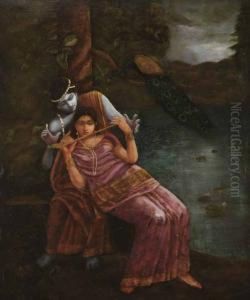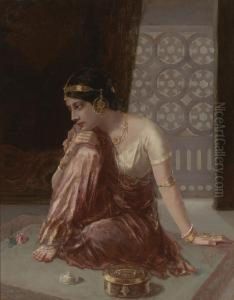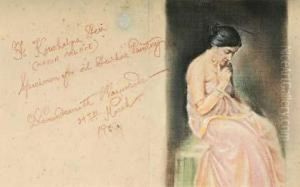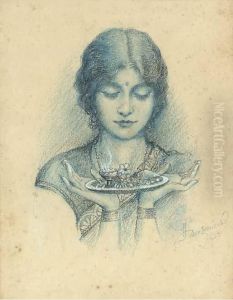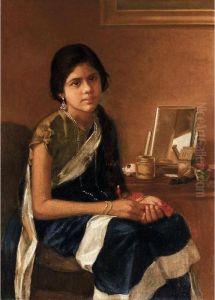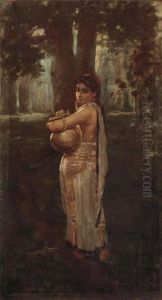Hemendranath Mazumdar Paintings
Hemendranath Mazumdar was a prominent Indian painter during the early 20th century, best known for his portrayal of women in his paintings. Born on October 22, 1894, in Mymensingh, which is now part of Bangladesh, Mazumdar showed an early interest in art. He moved to Calcutta (now Kolkata) for his education and attended the Government School of Art, where he was influenced by the academic realism that characterized British art institutions of the time.
Mazumdar's work primarily revolved around the depiction of the female form, often characterized by a sense of realism and soft, lyrical beauty. His subjects were usually sensuous women portrayed in serene and contemplative states, which was a significant departure from the traditional Indian approach of idealizing mythological figures. His paintings are noted for their delicate handling of light and shade, a technique that added a three-dimensional quality to his subjects.
Despite facing criticism from conservative segments of society for his bold representations, Mazumdar's art found favor among art lovers and collectors. His ability to blend Western academic art techniques with Indian subjects helped him gain popularity, and his work was widely exhibited in India and abroad during his lifetime.
Mazumdar was also a founding member of the Indian Society of Oriental Art and played a significant role in the development of modern Indian art. His contribution to Indian art was recognized by the British colonial government, which awarded him the prestigious Kaiser-i-Hind medal.
Hemendranath Mazumdar lived through a period of significant transition in India, witnessing the struggle for independence and the eventual partition of the subcontinent. He passed away on June 11, 1948, shortly before India gained her independence. Today, his work is considered a valuable part of India's artistic heritage and continues to be celebrated for its grace, beauty, and historical significance.

